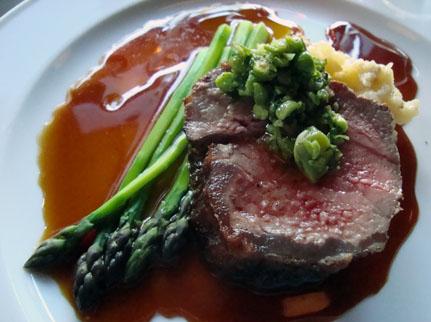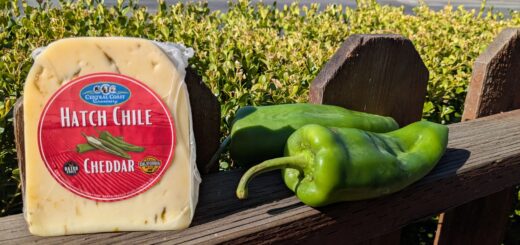Tips for Healthy Living: Grass-fed vs. Grain-fed Beef, What’s the difference?

Geri Wohl, CNC www.bettereatingcoach.com
Are you a person who likes a nice, juicy steak but has heard that red meat can be bad for you? Have you tried to reduce your red meat consumption because you’re worried about an increased risk of heart disease or concerned about eating saturated fats? Or maybe your cholesterol numbers, especially your LDL (bad) cholesterol is elevated. Let’s try to demystify some of the perceptions about beef.
When selecting beef, we have a choice of buying grain-fed or grass-fed. I have to admit that up until a number of years ago I was naive and didn’t know there was a difference. While both types of meat are wonderful protein sources with a full complement of amino acids, the differences are noticeable in flavor, texture, nutritional value and price.
Let’s start with grass-fed beef. As the name states, grass-fed beef comes from cattle who eat a natural diet of grasses. The cattle freely roam the pastures munching to their heart’s (and belly’s) content. Research shows that this type of beef is leaner, healthier and more environmentally friendly. Grass-fed beef is better for us in a number of ways.
- Lower in total fat, especially the unhealthy saturated fats. Grass-fed beef has 1/3 less fat per serving than grain-fed beef. For more on fats, see my article http://www.bettereatingcoach.com/7313-fearful-fats.html.
- Higher in omega 3 fatty acids that are required for the nervous system especially the brain and the cardiovascular system. A 3-ounce serving of beef has 35mg of omega 3s compared with 18mg from conventionally raised beef. For more about omega 3s, see my article http://www.bettereatingcoach.com/82813-sensational-salmon.html.
- Healthier ratio of omega 6 to omega 3 fatty acids. Since grass-fed has more omega 3s, it follows that the 6:3 ratio will be improved. The improved ratio has the benefit of less systemic inflammation.
- Lower in calories. Since there is less fat and fat has 9 calories per gram versus 4 calories per gram in protein and carbohydrates, grass-fed beef can be used in weight loss efforts.
- Higher levels of vitamin E, an important antioxidant. Vitamin E is associated with a lowered risk of heart disease and cancer in humans. Grass-fed beef has four times the amount of vitamin E than in grain-fed beef.
- Higher in the minerals magnesium, calcium and potassium. All these minerals are important cofactors of many metabolic processes.
- Elevated levels of conjugated linoleic acid (CLA), another “good” fat. CLA plays a role in weight loss and lowered risk of heart disease and cancers. In a Finnish study, women with highest levels of CLA were observed to have a 60% reduced risk of breast cancer than those with lowest levels. CLA may also help improve insulin resistance.
- Higher levels of beta carotenes, another important antioxidant. Beta carotenes help us neutralize free radicals and support our immune system.
- Fewer food-borne illnesses. As reported in the Journal of Dairy Science, grain-fed cows are at a higher risk than grass-fed cattle for E. Coli infections due to the unnatural environment of the gut.
- Grass-fed beef costs more than conventionally-raised beef. Due to the scalability, grain-fed beef has a lower price point.
 Conventionally raised cows spend the first 12-18 months grazing and then are moved to feedlots where the goal is to have the cattle mature as quickly as possible. The cows are fed grains instead of their normal foraged diet of grasses. Typically, the predominant grain fed the cattle is corn. They are also fed soy and other grains. This corn is not the same type of corn we eat ourselves but a type of corn that results in rapid weight gain. As stated in my previous article on corn, http://www.bettereatingcoach.com/71713-kernels-of-corn.html, corn grown as feed has been genetically modified to make it resistant to pests and selected for fast growth. In the US, most of our corn production requires a huge energy expenditure.
Conventionally raised cows spend the first 12-18 months grazing and then are moved to feedlots where the goal is to have the cattle mature as quickly as possible. The cows are fed grains instead of their normal foraged diet of grasses. Typically, the predominant grain fed the cattle is corn. They are also fed soy and other grains. This corn is not the same type of corn we eat ourselves but a type of corn that results in rapid weight gain. As stated in my previous article on corn, http://www.bettereatingcoach.com/71713-kernels-of-corn.html, corn grown as feed has been genetically modified to make it resistant to pests and selected for fast growth. In the US, most of our corn production requires a huge energy expenditure.
Conventionally-raised cattle may suffer from a number of conditions due to their grain-based diets. Their digestion is compromised since their guts (they have 4 of them) don’t contain the appropriate enzymes to break down these unfamiliar grains. This can result in acidosis, liver abscesses, bloating, feedlot polio, dust pneumonia and unfriendly pathogens. All these conditions then need to be treated with antibiotics or other medications to prevent an inferior product or death of the cattle. Of course, these drugs are absorbed in the meat and then consumed by us with unknown consequences. The herds may also be given growth hormones to accelerate the the cows’ growth. Some current theories suggest that these added hormones may be causing earlier onset of puberty in our children.
Since grass-fed beef doesn’t contain as much fat, cooking times are reduced to prevent it from drying out. Avoid defrosting it in the microwave as the muscle fibers can shorten and make the meat tough. The meat has its own unique flavor so keep seasonings simple. Best cooking techniques are braising or grilling over low heat.
For those carnivores, try some grass-fed beef next time you cook and know you are obtaining so much more than a simple piece of meat!
© Geri Wohl, CNC












